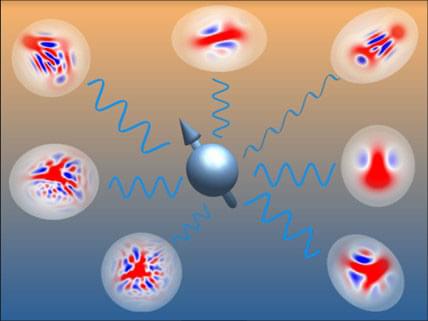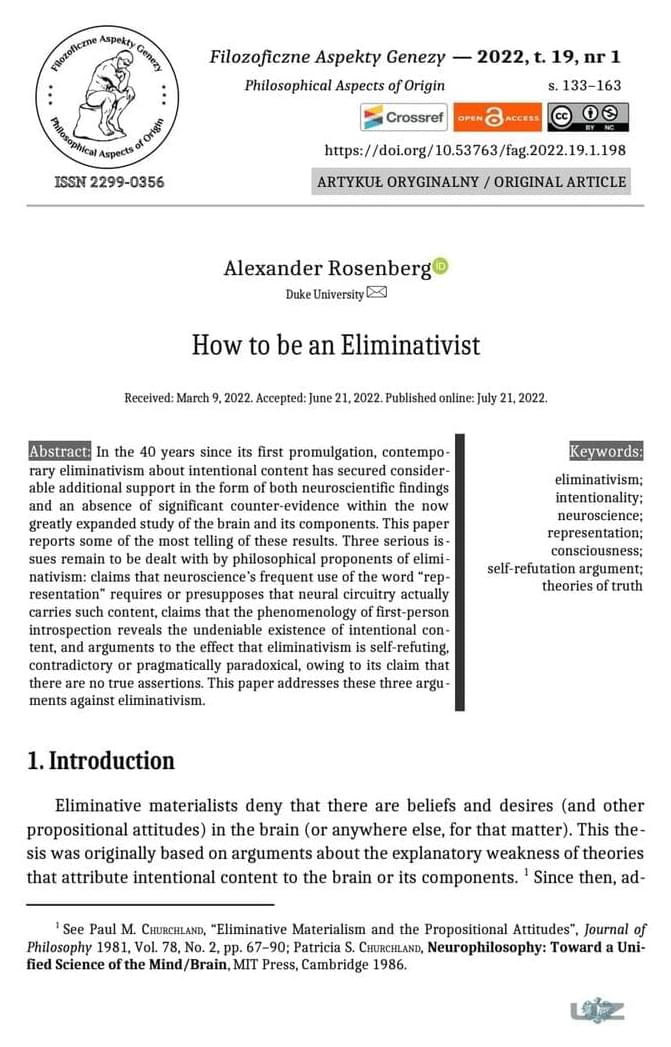New method turns liquid crystal elastomers into soft robotic actuators at room temperature, enabling easier customization and mass production.



Many of today’s quantum devices rely on collections of qubits, also called spins. These quantum bits have only two energy levels, the ‘0’ and the ‘1’. However, unlike classical bits, qubits can exist in superpositions, meaning they can simultaneously be in a combination of the ‘0’ and ‘1’ states. Spins in real devices also interact with light and vibrations known as bosons, greatly complicating calculations.
In a new publication in Physical Review Letters (“Fast quantum state preparation and bath dynamics using non-Gaussian variational Ansatz and quantum optimal control”), researchers in Amsterdam demonstrate a way to describe spin-boson systems and use this to efficiently configure quantum devices in a desired state.
Quantum devices use the quirky behaviour of quantum particles to perform tasks that go beyond what ‘classical’ machines can do, including quantum computing, simulation, quantum sensing, quantum communication and quantum metrology. These devices can take many forms, such as a collection of superconducting circuits, or a lattice of atoms or ions held in place by lasers or electric fields.

Researchers at Rensselaer Polytechnic Institute have fabricated a device no wider than a human hair that will help physicists investigate the fundamental nature of matter and light. Their findings, published in the journal Nature Nanotechnology (“Topological valley Hall polariton condensation”), could also support the development of more efficient lasers, which are used in fields ranging from medicine to manufacturing.
The device is made of a special kind of material called a photonic topological insulator. A photonic topological insulator can guide photons, the wave-like particles that make up light, to interfaces specifically designed within the material while also preventing these particles from scattering through the material itself.
Because of this property, topological insulators can make many photons coherently act like one photon. The devices can also be used as topological “quantum simulators,” miniature laboratories where researchers can study quantum phenomenon, the physical laws that govern matter at very small scales.
Alex Rosenberg is the R. Taylor Cole Professor of Philosophy at Duke University. His research focuses on the philosophy of biology and science more generally, mind, and economics.
/ friction.
/ discord.
/ frictionphilo.
00:00 — Introduction.
01:47 — Scientism.
05:16 — Naturalism.
08:08 — Methodological or substantive?
09:40 — Eliminativism about intentionality.
11:50 — Moorean shift.
13:28 — Arguments against eliminativism.
21:19 — Papineau on intentionality.
25:43 — Consciousness.
29:29 — Companions in guilt.
31:30 — Fodor and natural selection.
37:26 — No selection for?
38:16 — Properties.
39:21 — Selection for/against.
40:34 — Selection for long necks in giraffes.
42:26 — Speaking with the vulgar?
44:26 — Selection against as intensional.
47:12 — Function and selection for.
49:11 — Skepticism.
50:59 — Example.
52:06 — Mereological nihilism.
53:23 — Value of philosophy.
55:22 — Nihilism?
1:00:03 — Conclusion.
Music: PaulFromPayroll — High Rise


Summary: Researchers developed a drone that flies autonomously using neuromorphic image processing, mimicking animal brains. This method significantly improves data processing speed and energy efficiency compared to traditional GPUs.
The study highlights the potential for tiny, agile drones for various applications. The neuromorphic approach allows the drone to process data up to 64 times faster while consuming three times less energy.

Discussion at the Moving Naturalism Forward workshop, October 2012. Participants include Sean Carroll, Jerry Coyne, Richard Dawkins, Terrence Deacon, Simon DeDeo, Daniel Dennett, Owen Flangan, Rebecca Goldstein, Janna Levin, David Poeppel, Massimo Pigliucci, Nicholas Pritzker, Alex Rosenberg, Don Ross, and Steven Weinberg.
Visit https://www.preposterousuniverse.com/.… for more information.
“Qualia” is an unfamiliar term for something that could not be more familiar to each of us: the ways things seem to us. As is so often the case with philosophical jargon, it is easier to give examples than to give a definition of the term. Look at a glass of milk at sunset; the way it looks to you —the particular, personal, subjective visual quality of the glass of milk is the quale of your visual experience at the moment. The way the milk tastes to you then is another, gustatory quale, and how it sounds to you as you swallow is an auditory quale; These various “properties of conscious experience” are prime examples of qualia. Nothing, it seems, could you know more intimately than your own qualia; let the entire universe be some vast illusion, some mere figment of Descartes’ evil demon, and yet what the figment is made of (for you) will be the qualia of your hallucinatory experiences. Descartes claimed to doubt everything that could be doubted, but he never doubted that his conscious experiences had qualia, the properties by which he knew or apprehended them.
The verb “to quine” is even more esoteric. It comes from The Philosophical Lexicon (Dennett 1978c, 8th edn., 1987), a satirical dictionary of eponyms: “quine, v. To deny resolutely the existence or importance of something real or significant.” At first blush it would be hard to imagine a more quixotic quest than trying to convince people that there are no such properties as qualia; hence the ironic title of this chapter. But I am not kidding.
My goal is subversive. I am out to overthrow an idea that, in one form or another, is “obvious” to most people—to scientists, philosophers, lay people. My quarry is frustratingly elusive; no sooner does it retreat in the face of one argument than “it” reappears, apparently innocent of all charges, in a new guise.
This talk is part of a workshop on “To be or not to be… conscious. Phenomenal Realism and Illusionism”, held at Ruhr-Universität Bochum (Germany) on September 29–30, 2022, organized by François Kammerer and Tobias Schlicht.